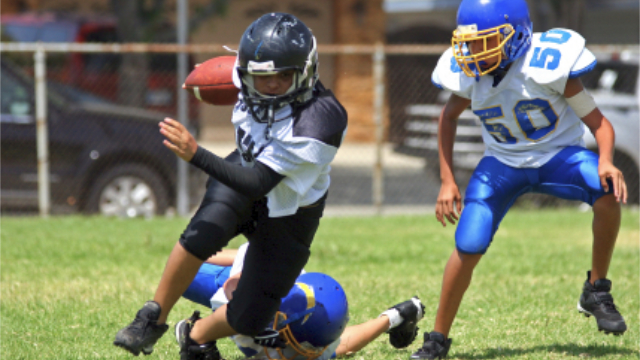
Excelling at sports and other athletic endeavors requires a broad set of physical skills and abilities that should be sharpened to achieve optimal performance. Among these is the ability to quickly change direction, which is considered essential for a number of fast–paced sports. It therefore follows that the most elite athletes tend to consistently demonstrate faster change of direction times compared with less elite athletes. Research has even suggested that targeting certain movements that lead to faster change of direction times can also reduce the risk for ACL injuries.
For these reasons, there has been increased attention into finding ways to improve change of direction performance. Resistance training—which involves the use of weights, bodyweight, or resistance bands to build strength—has been identified as an effective way to improve change of direction performance, but some sports organizations are hesitant to adopt these types of programs because they believe it may lead to increased soreness and muscle damage in athletes. In addition, resistance training programs typically require extended periods of time to provide the intended benefits, which can make it difficult to incorporate them into training programs.
Trainers and researchers have therefore been looking into alternative training methods to improve change of direction, which may translate to better performance and lower injury risk. In particular, they want to know what interventions increase either pre–planned agility—the ability to respond to expected external stimulus by braking as quickly as possible and then accelerating in a different direction—or reactive agility, which is the same motion but with a stimulus that is not expected. However, there is not much evidence supporting alternative methods for improving change of direction in the literature.
Scoping review suggests that addressing kinetic and kinematic variables may improve change of direction performance
With this in mind, a study called a scoping review was conducted to identify any other effective approaches that lead to better change of direction skills. To conduct the review, researchers performed a search of four medical databases for peer–reviewed studies that evaluated the effect of targeted interventions on change of direction in adult competitive athletes. A total of 53 studies were deemed eligible for inclusion in the review, and investigators analyzed their findings in search of patterns and trends.
Most of the studies include in the review (81%) investigated strength and/or power for improving change of direction, and the exercises that led to the greatest improvements included the broad jump, squat, squat jump, mid–thigh pull, deadlift, and eccentric hamstring strengthening exercise. Strength and/or power training led to an average improvement in pre–planned change of direction performance by 3.4%, and the average training time was 8.5 weeks.
But other interventions were also identified that may lead to similar or greater improvements than strength and power. Nine studies (17%) investigated the relationship between kinetic or kinematic variables and change of direction—most of which focused on pre–planned change of direction. They found that several variables were strongly related to change of direction performance, including increased velocity at specific points during a cutting maneuver, shorter ground contact time, and greater ankle power. There were also two studies that used alternative training interventions to improve change of direction performance, which reported improvements of 5.1% in pre–planned change of direction and 5.8% in reactive agility performance.
These findings suggest that there may be several variables other than strength and power that could improve change of direction performance in short training periods. In particular, certain kinematic cues can be incorporated into change of direction activities that could encourage performers to adopt beneficial kinematics during a direction change.
Trainers and researchers should take note of this study and consider its findings when designing training programs with the intention of optimizing performance and reducing injury risk. In the meantime, if you're dealing with any painful issues that are preventing you from performing at your best, we encourage athletes to contact us and schedule an appointment with one of our physical therapists.
